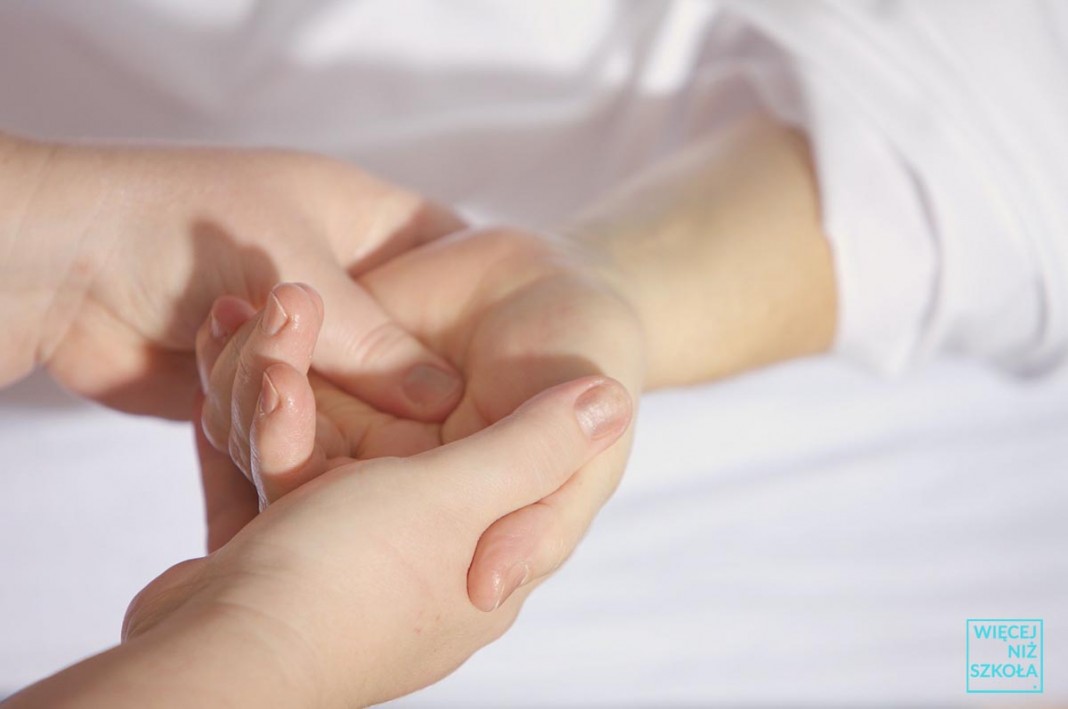Zbliża się lato, a wraz z nim najnowszy numer naszego czasopisma anglojęzycznego AimHigh. Artykuły właśnie się piszą, kilka mamy już w folderze, a tymczasem pierwszy z nich możemy przeczytać już teraz. Z tekstu Julki Daszkiewicz (2c Liceum) dowiemy się ciekawych rzeczy na temat fizjoterapii. Być może wiecie już o tym niemało, ale czy czytaliście o tym po angielsku? Zapraszamy!
========================
Physiotherapy – restoring health
Physiotherapy helps out with the malfunctional muscular, nervous, respiratory and circulatory systems. It can also protect us from surgery. Not a long time ago, patients went to physiotherapists directed by specialists, such as orthopaedists, neurologists or rheumatologists. These days, it has become common to seek their medical help on our own.
Physiotherapy – what is it?
Physiotherapy consists of various treatments, in which physical phenomena and reactions of the body to various stimuli are used. Depending on the damage to the body, it can be practised separately or as an addition to the pharmacological or surgical treatment.
Methods:
Healing massages – the kind usually depend on the disease;
Hydrotherapy and balneotherapy – treatment with water
Thermotherapy – the therapy using the flow of the thermal energy
Climatotherapy – based on the healing properties of the natural environment
Phototherapy – applies different types of radiation;
Electrotherapy – uses the direct and impulsive current;
Magnetotherapy – takes advantage of the magnetic field;
Ultrasonic Therapy – curing by ultrasounds;
Aerosol Therapy – implementing treating substances in the form of aerosol into the respiratory system;
Manual Therapy – skilful pressing on the painful places in the body.
Natural recources in physiotherapy
Most of the methods mentioned above use different sources of energy. In some, natural materials, such as mineral water, brine and curing gases are used. The most common mineral waters are the water that contains at least 1000 mg of permanent elements per one litre. Brine is the water with a concentration of NaCl, measuring a minimum of 1,5 percent. The curing gases are mostly carbon dioxide, hydrogen sulfide, radon, oxygen and air.
What does physiotherapy help with?
Physiotherapy can help to heal and attenuate the symptoms of:
Chronic obstructive airway disease / Mucoviscidosis / Myocardial infarction / Carpal tunnel syndrome / Jamming tendinitis / Back pain / Parkinson / Multiple sclerosis / Post-accident brain injury / Infantile Cerebral Palsy / Muscular dystrophy / Concussions of the brain / Tennisist’s elbow / Pelvic platform injuries / Lymphoedema
Advantages of physiotherapy
Physiotherapy helps to deal with the pain. Thanks to physiotherapy it possible to avoid surgery. It is significant for patients after injuries and accidents, as it simplifies proper functioning for paralysed people or the ones with brain oxygen deficiency. It is beneficial for old people as well, suffering from problems connected with age. Physiotherapy helps to maintain internal body balance. This is also often an element of sports training and allows athletes to develop their skills.

















